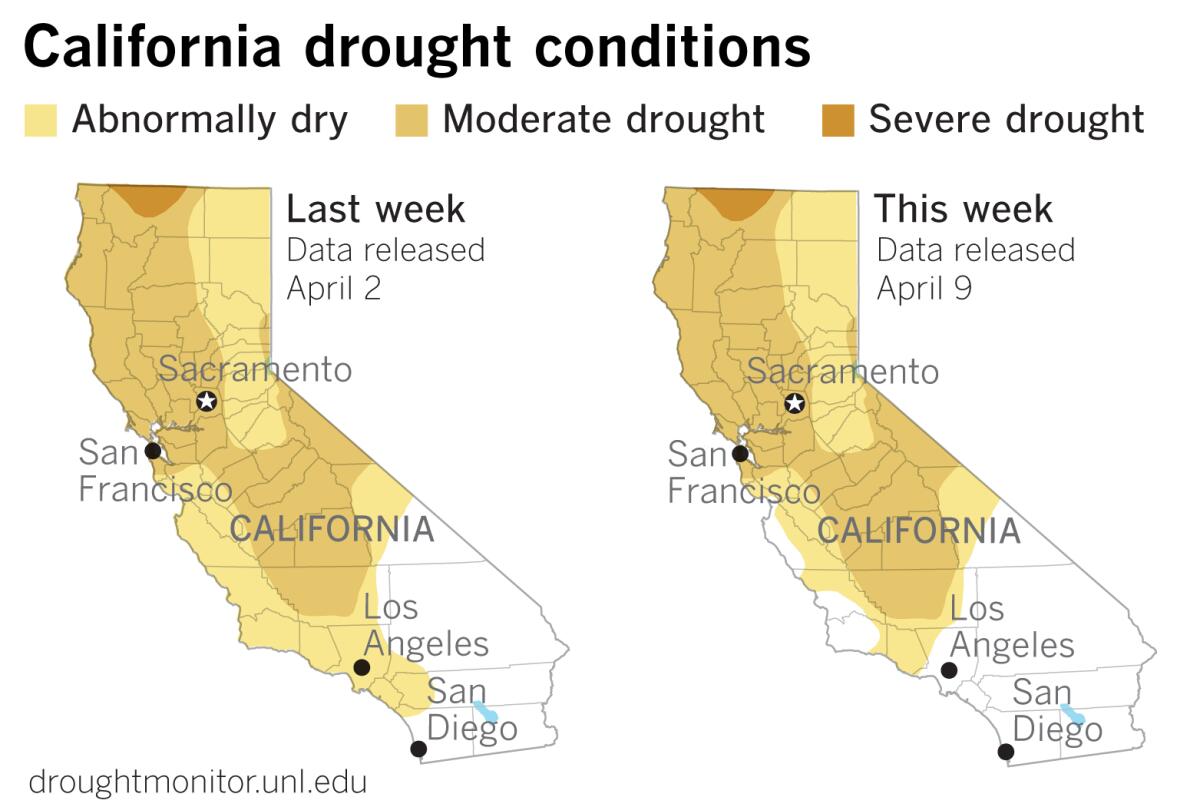April rains have put a dent in the drought, at least in Southern California

- Share via
U.S. Drought Monitor data released Thursday show that less of California is abnormally dry, and more of the state is drought-free.
The improvement is mostly in Southern California and along the Central Coast, while data for Northern California show little change.
A cold upper-level low has meandered around Southern California after stalling off Point Conception, dropping moderate to heavy rain and mountain snow for the last several days. For example, downtown Los Angeles received 1.10 inches of rain on Monday, breaking the old record for the date of 0.84 of an inch set in 1958.
For the period from Oct.1 through 5 p.m. on Thursday, 14.27 inches of rain have fallen in downtown Los Angeles, or 104% of normal. The seasonal norm is 14.93 inches through the end of September, and downtown L.A. usually gets only 0.91 of an inch in April.
In last week’s Drought Monitor data, 31.8% of the state was characterized as “abnormally dry.” That portion shrank to 24.4% of the state in this week’s report, and the part of the state not considered to be in drought increased to 32.3% from 24.9%. But all the improvement was on the Central Coast and in Southern California. Northern California, especially from Monterey Bay northward, has remained unchanged.
The data are released on Thursdays, but are compiled earlier. “I always figure they’re a week behind,” said climatologist Bill Patzert, who believes a Drought Monitor report should be released every two weeks. “Drought doesn’t disappear in a year, and it certainly doesn’t disappear in a week.”
The snowpack has been skimpy this year in the Sierra Nevada, with January and February so dry they resembled a typical April and May, Patzert noted. “It’s what I call calendar confusion. March and April have been more like January and February” in Southern California.
But rainfall in Southern California isn’t consequential like snow falling in the Sierra — what Patzert calls “the state’s biggest reservoir.” Rain in Southern California greens up the lawns, but mostly flows out to sea. “It’s like gravy on roast beef. It makes it taste better, but it doesn’t change much.”
“The Drought Monitor doesn’t mean anything in Southern California,” said Patzert. “Two weeks after the rain stops your sprinklers come on.”
More to Read
Sign up for Essential California
The most important California stories and recommendations in your inbox every morning.
You may occasionally receive promotional content from the Los Angeles Times.











